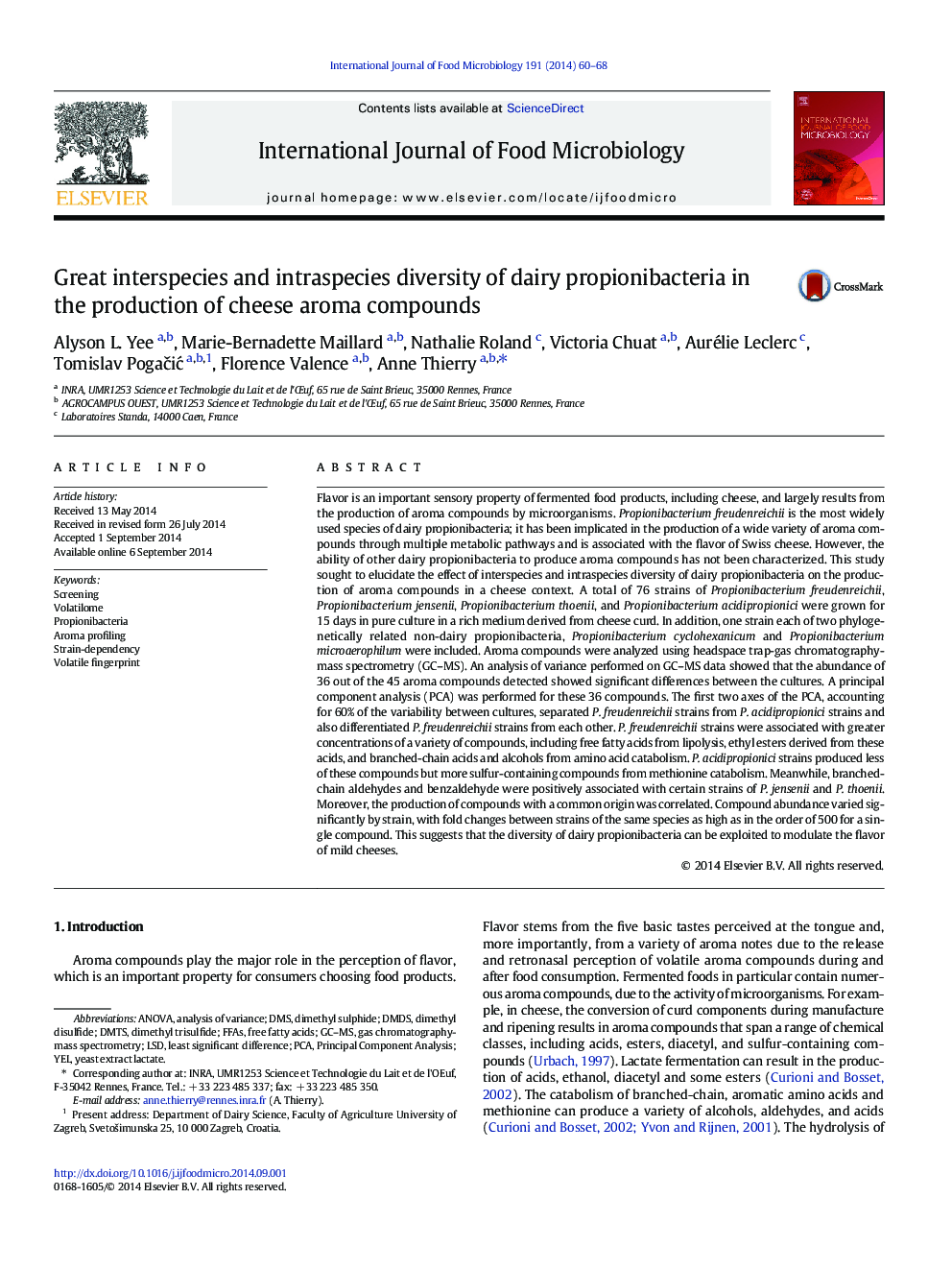| کد مقاله | کد نشریه | سال انتشار | مقاله انگلیسی | نسخه تمام متن |
|---|---|---|---|---|
| 4366721 | 1616592 | 2014 | 9 صفحه PDF | دانلود رایگان |
• 78 propionibacteria strains screened for their production of cheese aroma compounds
• Aroma compounds produced from fermentation, amino acid catabolism and lipolysis
• P. freudenreichii strains associated with greater diversity of aroma compounds
• Great variation between strains, with specific features for each species
• Dairy propionibacteria have the potential to modulate the flavor of mild cheeses.
Flavor is an important sensory property of fermented food products, including cheese, and largely results from the production of aroma compounds by microorganisms. Propionibacterium freudenreichii is the most widely used species of dairy propionibacteria; it has been implicated in the production of a wide variety of aroma compounds through multiple metabolic pathways and is associated with the flavor of Swiss cheese. However, the ability of other dairy propionibacteria to produce aroma compounds has not been characterized. This study sought to elucidate the effect of interspecies and intraspecies diversity of dairy propionibacteria on the production of aroma compounds in a cheese context. A total of 76 strains of Propionibacterium freudenreichii, Propionibacterium jensenii, Propionibacterium thoenii, and Propionibacterium acidipropionici were grown for 15 days in pure culture in a rich medium derived from cheese curd. In addition, one strain each of two phylogenetically related non-dairy propionibacteria, Propionibacterium cyclohexanicum and Propionibacterium microaerophilum were included. Aroma compounds were analyzed using headspace trap-gas chromatography-mass spectrometry (GC–MS). An analysis of variance performed on GC–MS data showed that the abundance of 36 out of the 45 aroma compounds detected showed significant differences between the cultures. A principal component analysis (PCA) was performed for these 36 compounds. The first two axes of the PCA, accounting for 60% of the variability between cultures, separated P. freudenreichii strains from P. acidipropionici strains and also differentiated P. freudenreichii strains from each other. P. freudenreichii strains were associated with greater concentrations of a variety of compounds, including free fatty acids from lipolysis, ethyl esters derived from these acids, and branched-chain acids and alcohols from amino acid catabolism. P. acidipropionici strains produced less of these compounds but more sulfur-containing compounds from methionine catabolism. Meanwhile, branched-chain aldehydes and benzaldehyde were positively associated with certain strains of P. jensenii and P. thoenii. Moreover, the production of compounds with a common origin was correlated. Compound abundance varied significantly by strain, with fold changes between strains of the same species as high as in the order of 500 for a single compound. This suggests that the diversity of dairy propionibacteria can be exploited to modulate the flavor of mild cheeses.
Journal: International Journal of Food Microbiology - Volume 191, 17 November 2014, Pages 60–68
